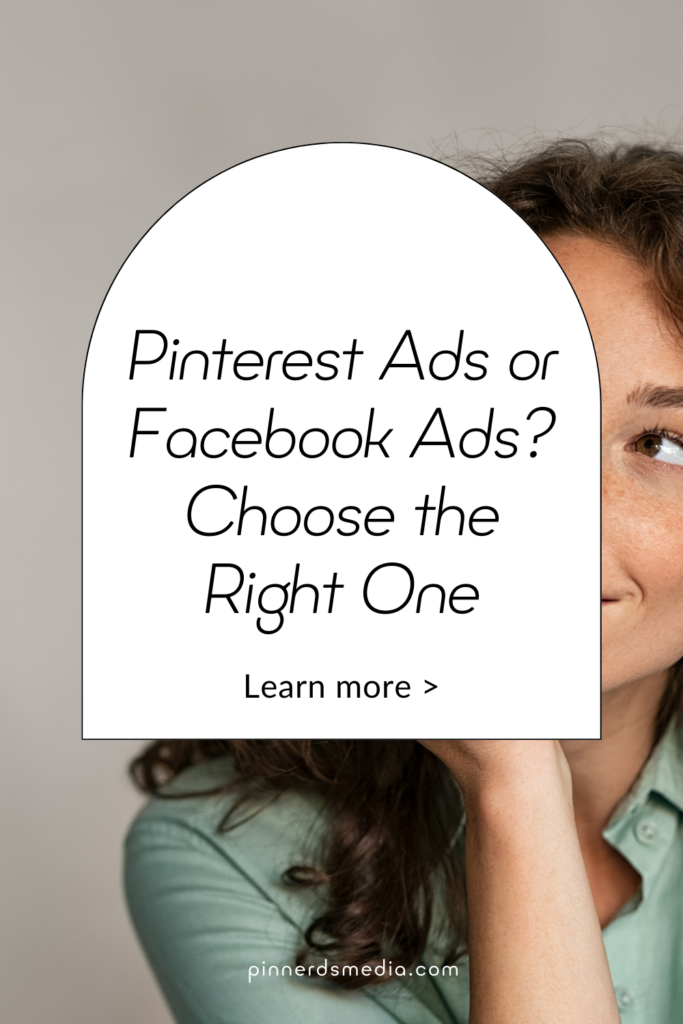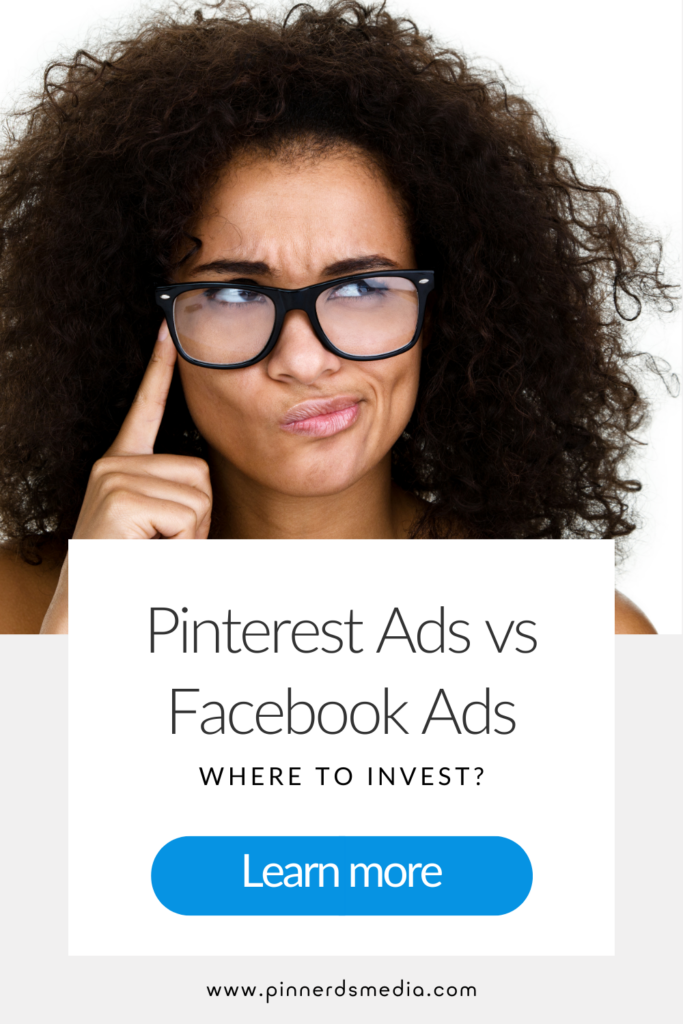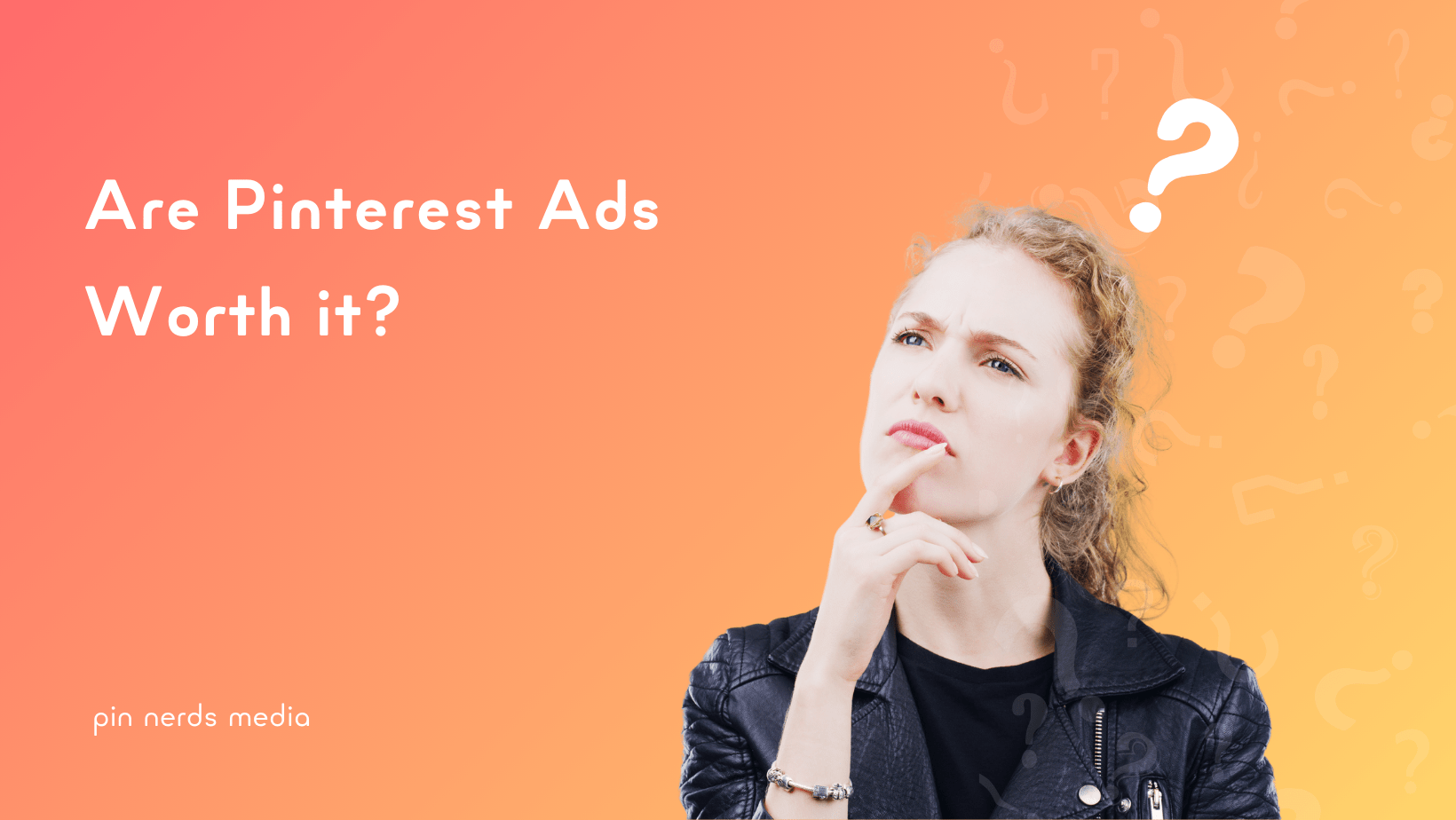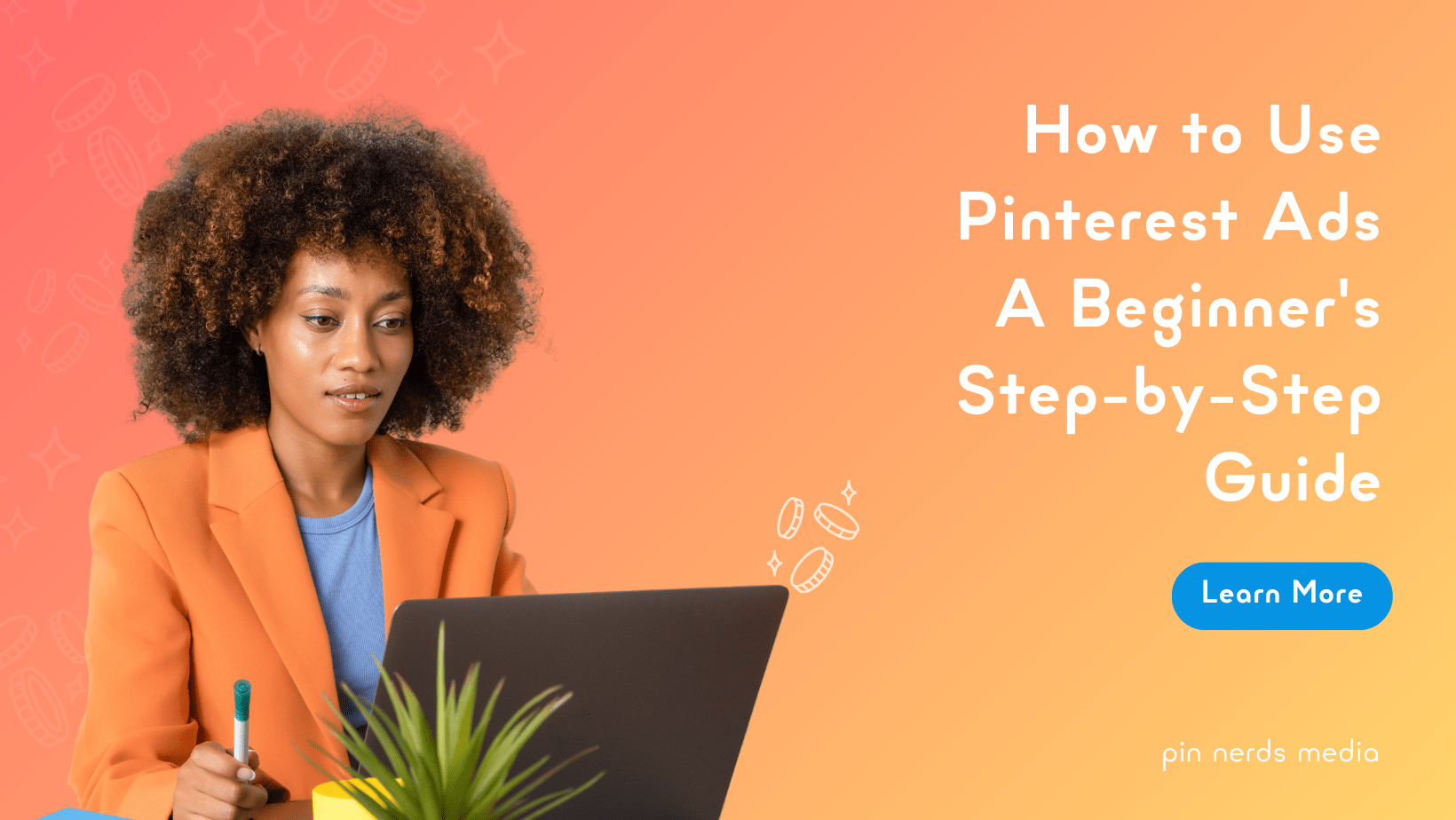This site features affiliate links that may earn us a commission at no extra cost to you if you decide to purchase through them. These commissions help us bring more valuable content to you. For more information, please see our full disclosure for more info.
Trying to decide between Pinterest Ads and Facebook Ads? Each platform offers powerful advertising opportunities, but their differences in cost, audience behavior, and targeting can make choosing the right one a challenge.
At their core, Facebook and Pinterest serve different marketing purposes:
- Facebook is a social engagement platform, where ads are strategically placed in feeds, stories, and videos based on user interests, behaviors, and past interactions.
- Pinterest is a visual search engine, where users actively look for ideas, inspiration, and products, making ad performance rely heavily on search intent rather than social engagement.
This fundamental difference changes the way ads perform on each platform.
So, which one is best for your business? The answer depends on your goals, budget, and patience.
My Experience Running Facebook Ads for Clients
As a digital marketer, I’ve managed Facebook ad campaigns for clients and have seen both great wins and frustrating losses. Facebook can be a powerful growth tool, but success isn’t guaranteed – it depends on the right targeting, ad creative, and budget strategy.
Some campaigns have delivered amazing results, while others struggled due to rising ad costs, increased competition, or audience fatigue. Pinterest, on the other hand, offers a very different approach to advertising, focusing on long-term brand visibility rather than immediate sales spikes.
In this article, I’ll break down the real differences between Facebook Ads and Pinterest Ads, share what I’ve learned from experience, and help you decide which platform is the right investment for your business.
Facebook & Pinterest – Audience Comparison
When deciding between Facebook and Pinterest ads, understanding the audience on each platform is important. Both platforms cater to different user behaviors, intent, and engagement styles.
How Facebook Ads Work
Facebook is one of the most advanced digital advertising platforms, giving businesses powerful tools to target, retarget, and convert potential customers. The platform’s biggest strength is its ability to precisely segment audiences based on demographics, behaviors, and interests.
If you want to put your product in front of a very specific group, Facebook allows for detailed targeting. For example, you can target women in their 30s who love interior design and have recently interacted with home decor content. You can even layer this with behaviors like engaged shoppers, ensuring your ad reaches users who are likely to buy.
One of Facebook’s greatest advantages is retargeting. With the Facebook Pixel, you can track website visitors, cart abandoners, and previous ad engagers, making it easy to re-engage warm leads. If someone visits your product page but doesn’t purchase, Facebook allows you to serve them ads that remind them to come back and buy.
Another key benefit? Speed. Unlike Pinterest, which requires patience, Facebook ads start driving results almost immediately. You can launch a campaign and begin seeing clicks, sign-ups, or purchases within hours, making Facebook ideal for:
- Flash sales and promotions
- Time-sensitive event registrations
- E-commerce product launches
However, Facebook also comes with downsides. Since it operates on a pay-to-play model, traffic stops the moment you stop spending. There’s no lasting impact unless you keep running ads. Additionally, ad costs are rising as more businesses compete for the same audiences.
Facebook Advertising Cost & ROI
- Cost per click (CPC): $0.50 – $2.00
- Best for: Businesses needing immediate sales, lead generation, and remarketing
- Biggest challenge: Rising competition means higher ad costs over time
How Pinterest Ads Work
Pinterest works very differently from Facebook because it’s a visual search engine, not a social media feed. People use Pinterest to discover new ideas, plan projects, and research purchases. This means ads reach users who are actively looking for inspiration and solutions, making them more likely to convert.
The biggest advantage of Pinterest advertising is that ads don’t disappear once the campaign ends. Because users save and reshare Pins, a single promoted Pin can continue driving traffic for months or even years. This is a huge advantage over Facebook, where visibility stops as soon as you stop paying.
Another key difference is Pinterest’s lower CPC. Ads on Pinterest start at just $0.10 per click, making it a more budget-friendly option for businesses that want long-term, evergreen traffic. However, the tradeoff is that Pinterest ads take longer to show results. While Facebook campaigns yield immediate feedback, Pinterest campaigns often take weeks or months to generate their full impact.
Another huge win for Pinterest? High conversion rates. Studies show that users exposed to Pinterest ads are more likely to make a purchase compared to users on other platforms. This makes Pinterest perfect for brands selling visually-driven products like:
- Home decor & furniture
- Fashion & beauty
- DIY & craft supplies
- Food & recipes
- Travel & lifestyle products
Pinterest Advertising Cost & ROI
- Cost per click (CPC): $0.10 – $1.50
- Best for: Businesses wanting long-term organic growth and high-intent buyers
- Biggest challenge: Slower results require patience before conversions start rolling in
New to Pinterest Ads? Get started with our complete guide on How to Use Pinterest Ads: A Beginner’s Step-by-Step Guide for a simple walkthrough on setting up and running successful ad campaigns.
Platform Metrics at a Glance
Now that we’ve covered how Facebook and Pinterest ads work, let’s compare their key performance metrics side by side.
| Platform | Audience Size (Millions) | Average CPC ($) | Average CPM ($) | Key Demographics |
|---|---|---|---|---|
| 3.07 (Billion) | 0.50 – 2.00 | 6 – 10 | Wide age range, diverse interests | |
| 553 (Million) | 0.10 – 1.50 | 2 – 5 | Female 25-34, lifestyle & product research |
Why These Metrics Matter
- Facebook has a massive audience (3 billion users), but ads cost more due to higher competition.
- Pinterest has a smaller audience, but users are more purchase-driven and ad costs are lower.
- Facebook works well for broad awareness campaigns, while Pinterest excels in intent-driven searches leading to higher conversion rates.
This data reinforces why Pinterest is often the better choice for businesses in lifestyle, fashion, home decor, and food niches, while Facebook is ideal for fast conversions, B2B, and local services.
What Are the Facebook Ads and Pinterest Ads Targeting Options?
When running ads on Facebook or Pinterest, your ability to target the right audience is key to getting the best return on investment (ROI). Each platform offers different methods for reaching users.
Facebook Ads Targeting Options
Facebook is known for its advanced audience segmentation. You can target users based on:
- Demographics – Age, gender, location, education, job title, income level
- Interests – Users’ likes, hobbies, activities, favorite brands, and influencers
- Behaviors – Online shopping habits, engagement with past ads, travel history
- Custom Audiences – People who have visited your website, engaged with your content, or subscribed to your email list
- Lookalike Audiences – New users similar to your existing customers
- Retargeting – Users who added an item to their cart but didn’t complete the purchase
Pinterest Ads Targeting Options
Pinterest’s targeting works differently because it’s based on user intent and search behavior rather than social activity. Ads can be targeted by:
- Keywords – Targeting users searching for terms related to your product (e.g., “modern kitchen decor” or “summer outfits”)
- Interests – Reaching users who engage with certain categories (e.g., home decor, fashion, DIY, beauty)
- Demographics – Age, gender, location, and language preferences
- Actalike Audiences – Similar to Facebook’s Lookalike Audiences, helping advertisers reach new people who behave like their best customers
- Engagement Retargeting – Showing ads to users who previously saved or interacted with your Pins
- Website Visitors Retargeting – Targeting users who visited your website from Pinterest but didn’t convert
Key Differences in Targeting
- Facebook uses behavioral and interest-based data to serve ads, while Pinterest relies on keyword searches and engagement signals.
- Pinterest users are actively looking for ideas, making keyword targeting more powerful for reaching high-intent buyers.
- Facebook’s retargeting capabilities are stronger, making it ideal for re-engaging website visitors or past customers.
ROI & Targeting Options
| Factor | ||
|---|---|---|
| ROI Potential | High, but requires ongoing spending | Long-term, more sustainable over time |
| Audience Targeting | Advanced, detailed audience segmentation | Keyword-based targeting, intent-driven |
| Retargeting | Strong with Facebook Pixel | Available, but not as advanced as Facebook |
Facebook Ad Optimization Options
On Facebook, advertisers can optimize ads for:
- Traffic – Driving users to a landing page or website
- Conversions – Encouraging sign-ups, purchases, or lead form submissions
- Engagement – Getting likes, comments, and shares
- App Installs – Encouraging downloads of an app
- Video Views – Optimizing for users who watch a certain percentage of a video
- Lead Generation – Capturing emails and contact info through in-ad lead forms
Pinterest Ad Optimization Options
Pinterest allows businesses to optimize for:
- Traffic – Driving users to a product page or blog post
- Conversions – Encouraging direct purchases from promoted pins
- Engagement – Boosting Pin saves and clicks
- Video Views – Maximizing video ad exposure to interested users
- Brand Awareness – Increasing reach and visibility among relevant users
Key Differences in Optimization
- Facebook offers more ad objectives, including lead generation and app installs.
- Pinterest is stronger for organic engagement since saved Pins continue driving traffic after the campaign ends.
- Facebook is best for short-term, action-driven campaigns, while Pinterest is better for long-term discovery and purchase planning.
Engagement & Buyer Intent
One of the most significant differences between Facebook and Pinterest ads is how users engage with content and their intent to purchase.
- Facebook ads appear while users are engaging with social content, meaning purchases are often impulse-driven rather than planned.
- Pinterest, however, functions as a search engine, where users actively seek inspiration and solutions, leading to higher purchase intent.
Pinterest users are 47% more likely to purchase after seeing an ad compared to Facebook users, who rely more on retargeting. This makes Pinterest ideal for long-term sales and brand visibility, while Facebook excels at fast conversions and retargeting campaigns.
Additionally, according to Pinterest Business, Pinterest’s influence on shopping behavior is particularly strong among millennials. According to Pinterest’s own data, 44% of millennial Pinners have purchased a product after seeing branded content on the platform. This further supports Pinterest’s effectiveness as a discovery and shopping platform, making it a powerful tool for brands targeting younger consumers.
Wondering if Pinterest followers affect your growth? Read more about how they influence engagement and visibility.
Cost and Budget Considerations
| Factor | ||
|---|---|---|
| Cost per Click (CPC) | $0.10 – $1.50 | $0.50 – $2.00 |
| Cost per Impression (CPM) | $2 – $5 | $6 – $10 |
| Ad Longevity | Long-Term Visibility | Short-Term Visibility |
| Best For | Visual-driven products | Quick reach for broad audiences |
Ad Formats and Creative Requirements
Both Facebook and Pinterest have unique creative requirements. Facebook ads can include image ads, video ads, carousel ads, and story ads, allowing for flexibility in storytelling.
High-resolution visuals and engaging captions tend to work best, and ad copy can be detailed to highlight offers or promotions.
Pinterest ads, on the other hand, are heavily visual, often requiring vertical images (1000×1500 pixels) with little to no text overlay. The platform favors clean, high-quality images that blend naturally with organic pins.
Video ads should be short and engaging, with a recommended length of 6–15 seconds.
Facebook requires a more hands-on approach due to its complex targeting system and frequent budget adjustments.
Pinterest is easier to manage, making it a good option for businesses with limited ad management resources.
Ease of Use: Facebook vs. Pinterest Ads
Facebook Ads
- Requires technical setup (Pixel, events, tracking).
- Steeper learning curve, needs frequent optimization.
- Demands frequent budget adjustments and audience testing.
- Strong AI-driven audience learning and automation.
Pinterest Ads
- Easier setup, primarily keyword-based targeting.
- Beginner-friendly, optimized for discovery, and long-term growth.
- Ads can run longer with minimal adjustments.
- Less AI-driven but benefits from organic visibility over time.
Pros and Cons of Facebook vs. Pinterest Ads
Facebook Ads – Pros
- Highly targeted audience segmentation.
- Strong retargeting capabilities.
- Quick results, making it ideal for time-sensitive promotions.
- Advanced AI-driven automation for optimizing campaigns.
Facebook Ads – Cons
- High competition, leading to increased ad costs.
- Expensive CPC, typically higher than Pinterest.
- Short-term impact, requiring ongoing ad spend to maintain visibility.
- Requires frequent monitoring, budget adjustments, and audience testing.
Pinterest Ads – Pros
- Lower CPC, making it cost-effective for long-term visibility.
- High purchase intent, as users are actively searching for solutions.
- Long-lasting content, with promoted pins continuing to drive engagement after the campaign ends.
- Ideal for visual products (home decor, fashion, food, beauty, etc.).
Pinterest Ads – Cons
- Slower results, requiring patience before seeing conversions.
- Keyword targeting requires strategy, making it less automated than Facebook’s behavioral targeting.
- Not as strong for retargeting, compared to Facebook’s advanced capabilities.
Which One Is Right for You?
Deciding between Pinterest and Facebook ads comes down to your business model and goals. If you’re running a limited-time sale or need quick conversions, Facebook’s ability to target and retarget makes it the better option.
But if you’re selling evergreen products or want a steady flow of organic traffic, Pinterest is a smarter investment.
Consider Pinterest if you:
- Sell products that are visually appealing (home decor, fashion, food, beauty, travel, DIY, etc.).
- Want to attract high-intent buyers who are actively searching for ideas.
- Prefer a long-term strategy where your ads keep working even after the campaign ends.
- Need a lower cost-per-click (CPC) advertising option that provides high engagement.
On the other hand, Facebook may be the better choice if you:
- Need immediate results from your ad spend.
- Want highly specific audience targeting based on behavior and demographics.
- Have the budget to run ongoing ad campaigns without relying on organic reach.
- Are running a B2B, fitness, or tech-related business that benefits from Facebook’s advanced targeting options.
Should You Use Both?
For many businesses, the ideal approach is actually a combination of both platforms. Facebook can bring in quick conversions, while Pinterest builds brand awareness and long-term traffic.
If your budget allows, testing both platforms and optimizing based on performance can give you the best of both worlds.
Brands with strong lifestyle, home, or beauty products should prioritize Pinterest. Those focused on fast-moving consumer goods, subscription services, or local services may find Facebook to be a stronger investment.
Want to take your Pinterest Ads strategy to the next level? Check out 8 Pinterest Advertising Tips to Grow Your Business Online for expert tips on how to increase engagement and conversions.
Final Thoughts
After running Facebook ads for clients, I’ve seen firsthand how powerful they can be – but I’ve also learned that not every business thrives on Facebook’s fast-paced, high-cost environment. Some brands do exceptionally well with Facebook’s advanced targeting and retargeting, while others struggle with rising ad costs and competition.
Pinterest, on the other hand, offers a completely different approach – one that focuses on long-term discovery and organic engagement. If your business relies on visual storytelling, evergreen content, or search-driven buyers, Pinterest can be a cost-effective and sustainable choice.
Ultimately, the best platform is the one that fits your business model, goals, and budget. If you need fast conversions and aggressive retargeting, Facebook may be the way to go. But if you’re looking for consistent traffic, lower ad costs, and an audience with strong purchase intent, Pinterest is a smart investment.
Thinking about running Pinterest ads but not sure where to start? Let’s connect and create a strategy that works for your business!
📌 Download My FREE Annual Pinterest Blueprint – A complete step-by-step guide to refining your Pinterest strategy and achieving steady growth.
📌 Find Our Pinterest Resources – Discover the tools and techniques we use to drive long-term success for our clients.
📌 Let Us Handle Your Pinterest Growth – From strategy to content and audience engagement, we’ll take care of it so you can focus on your business.
Like what you saw? Pin it so you can refer to it later! 👇



Rodney, a Pinterest marketing guru, initially ventured into the field to boost his wife’s cake business & blog. With his unique strategies, he tripled their page views in just 3 months. Now, he’s passionate about helping businesses harness the power of Pinterest. Off-duty, he’s a dessert aficionado!


